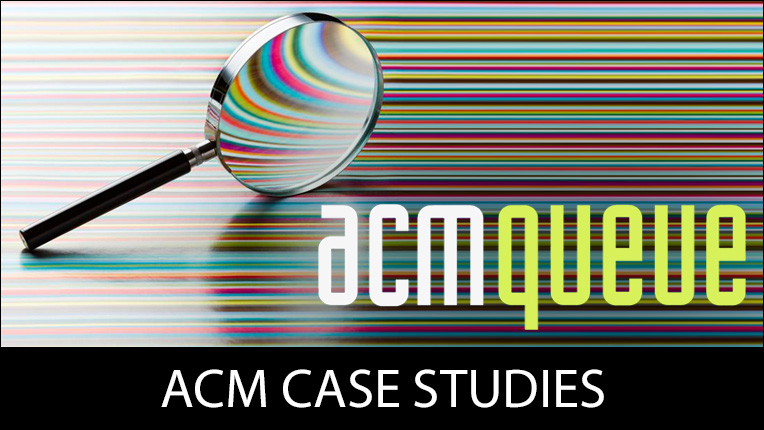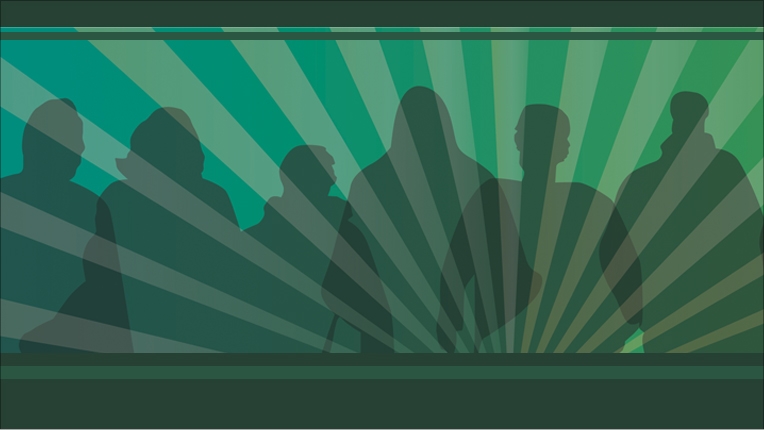SIGGRAPH Annual Report
July 2002 - June 2003
Submitted by: Alain Chesnais, President
Summary of Key Issues
The economic downturn continues to be our key challenge, resulting in fewer exhibitors and lower attendance at our annual conference. We are cutting expenses, and also working to keep events current and exciting. Globalization and expanded online services continue to be key goals for building our community worldwide, and raising ACM SIGGRAPH's profile as "the voice of computer graphics" is an important goal for fulfilling our mission.
Our membership is not growing, despite having reestablished a basic new member welcome letter and a lapsed member mailing. We have also introduced ACM SIGGRAPH-specific membership cards. This aims at installing a sense of belonging to new SIG-only members. In the past, once they had joined, they did not receive any acknowledgment of being a part of the ACM SIGGRAPH organization. This issue is considered to be a major problem by the ACM SIGGRAPH leadership and we feel that much of this can be attributed to a slumping economy and the fact that much of what we offered as member benefits are now readily available to a much larger community through the web using tools such as Google.
Strategic Planning
The focus of the strategic planning this year has been to develop the notion of the ACM SIGGRAPH website as a graphics hub, from which visitors should be able to find all computer graphics related material available on the web. Access to the site will be different based on the level of membership of an individual user. Non members will be able to browse a subset of the site, but will not be able to access everything and will not be able to post to the site. Chapter members will get the ability to post to forums and access more of the site than non members. Full members will get the maximum level of access, including extra services such as e-mail forwarding and possibly web page hosting as well. Each level of membership gives limited access to the next higher level. For instance a non member can read the forums, but cannot post to it until they become a member. This aims to reestablish a perception of relevant member benefits, specifically for our younger members, and hopefully incite more of the general SIGGRAPH community at large to actively become members.
Nominations
This year we had three positions up for election:
-
Masa Inakage was reelected to a three year term as Director at Large
-
Tony Baylis was elected to a three year term as Treasurer
-
Colleen Case was elected to a three year term as Director for Education
Membership
Our primary member communication vehicles are the siggraph.org website, our booth at the annual conference, and the printed "GIP" (General Information Piece) that is produced for the conference each year.
With the assistance of ACM Information Systems staff, an online application for joining ACM SIGGRAPH without navigating the cumbersome ACM Store interface was deployed in 1999. It has been tremendously successful and handles a large percentage of our new membership. We have improved it again this year, streamlining the membership renewal process, giving members the ability to indicate Eurographics membership for reduced rates and adding the ability to sign up for Member Value Plus benefits.
Another issue that remains outstanding is that we need to develop a common user authentication system between the acm.org services and siggraph.org services. This will provide a reinforced sense of being one organization and make it easier for members to navigate our site.
Online Activities
We are significantly expanding our online information, and continued expansion in this area is a very high priority. One of our high-level goals is to complete the Hub prototype implementation. We currently offer technical presentations from the SIGGRAPH 2002 Conference online, a news alliance with Computer Graphics World, and are starting a newly created area called "Ask Dr. SIGGRAPH". We are moving the site over to a Plone based interface to allow more online interaction with our users. The expected benefits of doing so are:
-
Having the whole site managed through a high level Content Management System
-
Allowing members to propose content for publication without having to learn the specifics of the siggraph.org style sheets, nor even having to know HTML
-
Providing the mechanism for establishing role based access to specific areas of the site, thus reinforcing the notion of membership through the website itself
-
Giving our members the ability to interact online through user forums
We are planning to expand our online presentation of material for SIGGRAPH 2003 by contracting out the development of both an online presence and the creation of a DVD for selected presentations. The material should be available in both media at the end of September 2003. If this program is a success we plan on covering all of the technical presentations in this fashion at SIGGRAPH 2004.
Annual Conference
SIGGRAPH 2002 was held July 21-26 in San Antonio, Texas and chaired by Tom Appoloni. It drew over 17,000 people from 70 countries with a paid technical attendance of over 5,600. There were over 225 exhibitors occupying 82,000 square feet of space. It had a net loss of $1,325,000. There were record numbers of technical papers submissions and computer animation submissions. The new Web Graphics program was very well received by attendees. Attendees learned techniques for developing graphics for the Web so they can take advantage of its artistic, commercial, and personal potential. The Computer Animation Festival jury selected "The Cathedral" as the Best Animated Short and this film was later nominated for an Academy of Motion Picture Arts and Sciences award for best animated short film. This was the first time that an animated film that had debuted at SIGGRAPH was nominated.
Symposia
In addition to the conferences that regularly receive ACM SIGGRAPH support, this year we also supported Afrigraph 2003 and the Spring Conference in Computer Graphics held in Slovakia. The Afrigraph conference, held in Cape Town in February 2003, was the result of the successful ACM SIGGRAPH-Eurographics mission to Southern Africa in March 2001. The organization for the next conference is already well under way, with the next event scheduled for November 2004 (See http://www.afrigraph.org/).
Awards
Three ACM SIGGRAPH Awards were given at SIGGRAPH 2002.
David B. Kirk, NVIDIA Corporation, received the Computer Graphics Achievement award, which is given each year to recognize an individual for an outstanding achievement in computer graphics and interactive techniques. Kirk was selected for the award to recognize his key technical role in bringing high-performance computer graphics systems to the mass market.
Steven J. Gortler, Harvard University, received the Significant New Researcher Award, which is awarded annually to a researcher who has made a recent significant contribution to the field of computer graphics and is new to the field. Gortler was elected for this award to recognize his work, which has been marked from the beginning by challenging mathematical insights coupled to practical graphical algorithms.
Bertram Herzog, Fraunhofer Center for Research in Computer Graphics and Professor at the University of Michigan, received the Outstanding Service Award presented to recognize individuals who have given extraordinary service to ACM SIGGRAPH.
Relationships with other societies
ACM SIGGRAPH and Eurographics have an affiliation agreement that allows for discounted joint membership. This already close working relationship was further enhanced this year with the signing of a publishing agreement as an addendum to our existing affiliation agreement. Joint ACM SIGGRAPH-Eurographics activities this year included two more successful Campfires (see Symposia) and the joint mission to Australia, New Zealand, and Singapore.
In addition to working closely with Eurographics, the Japanese Computer Graphics and Art Society (CG-ARTS), the Digital Content Association of Japan (DCAj), and Nordic Interactive, ACM SIGGRAPH has also been developing relationships with other computer graphics associations. A new cooperation agreement with the China Society of Image and Graphics (CSIG) was signed in Hangzhou, China and new agreements with the Independent Game Developers Association (IGDA), International Visual Literacy Association (IVLA), the Swedish Computer Graphics Society (SIGRAD) and Imagina are due to be signed at SIGGRAPH 2002.
In March 2002 an ACM SIGGRAPH-Eurographics delegation went to Australia, New Zealand, and Singapore with the goals of:
-
promoting Computer Graphics and Interactive Techniques
-
learning about the state of computer graphics and interactive techniques in the region
-
helping to establish two regional graphics associations, ANZgraph (Australia and New Zealand Graphics) and SEAgraph (South East Asia Graphics)
-
helping to enable worldwide collaborations for universities and industry in the region.
One of the outcomes of this successful visit is the Graphite 2003 conference that was held in Melbourne in February 2003 attracting over 200 technical attendees for its first venue. A follow on conference, Graphite 2004 is planned for June 2004 in Singapore.
Projects
Traveling Art Show (TAS)
Every other year, part of the art show from the conference is selected to travel for two years. The raveling art show (TAS) continues to increase its activities as it is hosted by ACM SIGGRAPH chapters and conferences supported by ACM SIGGRAPH around the world. Highlights of this year's events include:
-
Bowling Green chapter
-
New York City chapter
-
Melbourne, Australia in conjunction with Graphite
-
Paris, France in conjunction with Micad
Project Grants
The Project Grants Committee budget for 2002-2003 was $45,950. Although there were several proposals, no grants were awarded during the year.
Education
The following events and projects were supported by the ACM SIGGRAPH Education Committee:
Sao Paulo workshop:
The Education Committee sponsored a workshop organized by Professor Marcelo Zuffo at So Paulo University Brazil. The workshop's goals were to enhance computer graphics education and to better integrate educators in the region. Travel funds of $5000 were provided by the Education Committee in order to help educators from different countries and regions of the continent to attend the workshop. The workshop took place February 3-7, 2003. Based on his positive experience of a similar workshop held in June, 2002 in Gaborone, Botswana, Steve Cunningham from ACM SIGGRAPH acted as prime instructor at the workshop. The workshop was very successful.
CGEMS - Computer Graphics Educational Materials Server
At the joint ACM SIGGRAPH/Eurographics workshop on Computer Graphics Education in Bristol, UK which took place July 6-7, 2002, it was decided that as a joint effort the development of a refereed repository of computer graphics educational material should be pushed forward. Computer graphics education in computer science and in the arts were chosen as target areas. Professor Dena E. Eber from the School of Art at Bowling Green State University, Ohio, and Professor Joaquim A. Jorge from the Computer Science Department at the Technical University of Lisbon, Portugal, volunteered to supervise the project. The project was carried out at Joaquim Jorges department, with regular feedback by the Education Committees Webmistress, Rhonda Schauer. The project was supported with $1200 from the Education Committee's budget, and EUR 1200 from the Eurographics Education Board. The CGEMS server, version 1.0 will be available by SIGGRAPH'03. It will be made interoperable with both Eurographics and ACM Digital Libraries.
Defining a Computer Graphics Curriculum
Having identified a foundation for the computer graphics discipline and a knowledge base for computer graphics, forums in the Educators Programs at the past two SIGGRAPH conferences have produced lists of core topics in computer graphics from both computer science and art perspectives. The next logical step is to develop one or more computer graphics curricula that will serve the needs of computer science and art majors. The SIGGRAPH Education Committee has funded a one-day workshop at SIGGRAPH 2003 to bring together up to ten computer graphics educators to develop these curricula. This workshop is being organized by Professor Cary Laxer from the Rose-Hulman Institute of Technology at Terre Haute, Indiana, and Professor Gary Bertoline from Purdue University at West Lafayette, Indiana.
Computer Graphics Education - CGE'03
Following the successful joint ACM SIGGRAPH/Eurographics workshop on Computer Graphics Education in Bristol, UK (July 6-7, 2002), a workshop was planned to take place in Hangzhou, China, in July 2003. This workshop should focus on the development of syllabi for advanced technical courses in computer graphics, the development of viewpoints on the breadth and types of computer graphics courses for different types of educational institutions, visual learning in science and engineering, and computer graphics research and education in China. The organization of this workshop, headed by Professor Jiaoying Shi from the State Key Lab of CAD&CG at Zhejiang University in Hangzhou, China, and by Professor Cary Laxer from the Rose-Hulman Institute of Technology at Terre Haute, Indiana, was almost completed when the serious SARS situation forced us to postpone it. It is now planned to be held in June 2-5, 2004 at the same venue.
Conference activities
The Conference activities SPACE Poster Competition, SPACE Animation Competition, SPICE Interactivity Competition, and Faculty Submitted Student Work have already brought excellent results, which will be on display in San Diego at SIGGRAPH 2003. The Posters of the SPACE Poster Competition 2002, San Antonio, will be a part of the art exhibit at the Fleet in San Diego. The Education Committee funded the special framing of the posters with $1085 + sales tax. There were no serious applications this year for the ACM SIGGRAPH Educators' Conference Grants.
SIGGRAPH Education Directory
Thanks to Scott Owen a new Education Directory has been developed and will go live soon.
Traveling Courses
In February, a course on OpenGL taught by David Shreiner was given at the Afrigraph conference in Cape Town, South Africa, then again at the Graphite conference in Melbourne Australia. This successful course was very well received at both venues.
Publications
The SIGGRAPH Publications Committee oversees and is involved with all aspects of SIGGRAPH publications, from budget planning and approval, to production, to order fulfillment, to new project development.
Stephen Spencer (The University of Washington) heads the Publications Committee and oversees the work of the rest of the committee. He also oversees CD-ROM production and print publication production tasks.
Dana Plepys and Thomas DeFanti (University of Illinois at Chicago) heads the SIGGRAPH Video Review program, offering high-quality, relevant CG content on video tape and DVD.
Patricia Galvis-Assmus (UMass-Amherst) and Hans Westman (Art Institute of Pittsburgh), along with production help from Lynn Valastyan (Smith, Bucklin and Associates) handle the SIGGRAPH Newsletter / Computer Graphics Quarterly, a quarterly publication of ACM SIGGRAPH.
ACM SIGGRAPH offers a wide range of publications for sale to the computer graphics community, mainly focused on the content presented at the organization's conferences and workshops: printed and CD-ROM based conference and workshop proceedings, video tapes, and DVDs all help to document these gatherings of the computer graphics community.
The SIGGRAPH "Member Value Plus" program offers conference and workshop proceedings for sale to SIGGRAPH members at reduced rates.
Our arrangement with Eurographics to assist in sponsoring a number of their events and handle the production and printing of the proceedings of the events is going well.
Two major changes have occurred in the realm of ACM SIGGRAPH publications:
-
Our arrangement with the ACM 'Transactions on Graphics' journal to publish the papers presented at our annual conference as a special issue of that journal has been extended indefinitely. An initial, two-year experiment (2001 and 2002) was very well-received, and it was felt that continuing it would be a great service to our members and the computer graphics community.
-
We've reduced the number of separate publications which document the annual conference:
-
the aforementioned special issue of ACM 'Transactions on Graphics';
-
the 'Electronic Art and Animation Catalog,' documenting the Art Gallery and Computer Animation Festival;
-
our continuing documentation of the Computer Animation Festival content in the SIGGRAPH Video Review (SVR) publications;
-
a new 'Full Conference DVD-ROM' two-disc set containing content from all of the programs at the annual conference; and
-
a new 'Conference Select CD-ROM' two-disc set containing content from all of the programs at the annual conference except Papers and Courses.
-
Chapters
The major goal of the past year was to encourage the growth of the chapters' network. Although we suffered from an important budget cut, we were able to achieve this goal by focusing on a couple of areas: increased outreach, especially towards students, and better administrative support, through the development of CAWA (Chapters Automated Web Application). Also, we have tried to increase the level of interactions between the chapters and the other programs of the organization.
Twelve chapters were chartered this year - six student chapters and six professional chapters - which bring the total number of chapters to sixty-nine chapters in seventeen countries around the world - sixteen student chapters and fifty-three professional chapters. It is interesting to note that due to the ACM SIGGRAPH delegation to southeast Asia and Oceania in Spring of 2002, many chapters from this region have been chartered or are in formation, such as Bali, Bangkok, Kuala Lumpur, Adelaide, Canberra, Perth, Canterbury/Christchurch.
A complete listing of existing chapters can be found at http://chapters.siggraph.org. This public portion of the site also lists the upcoming and past chapter events, indicates how one can start a chapter, and presents some general information about the PSCC. Chapter leaders have access to a private section that presents all the information they require to run their chapter effectively.
Lifelong Learning
ACM offers lifelong learning resources including online books and courses from Skillsoft, TechTalks on the hottest topics in computing and IT, and more.

ACM Case Studies
Written by leading domain experts for software engineers, ACM Case Studies provide an in-depth look at how software teams overcome specific challenges by implementing new technologies, adopting new practices, or a combination of both. Often through first-hand accounts, these pieces explore what the challenges were, the tools and techniques that were used to combat them, and the solution that was achieved.

